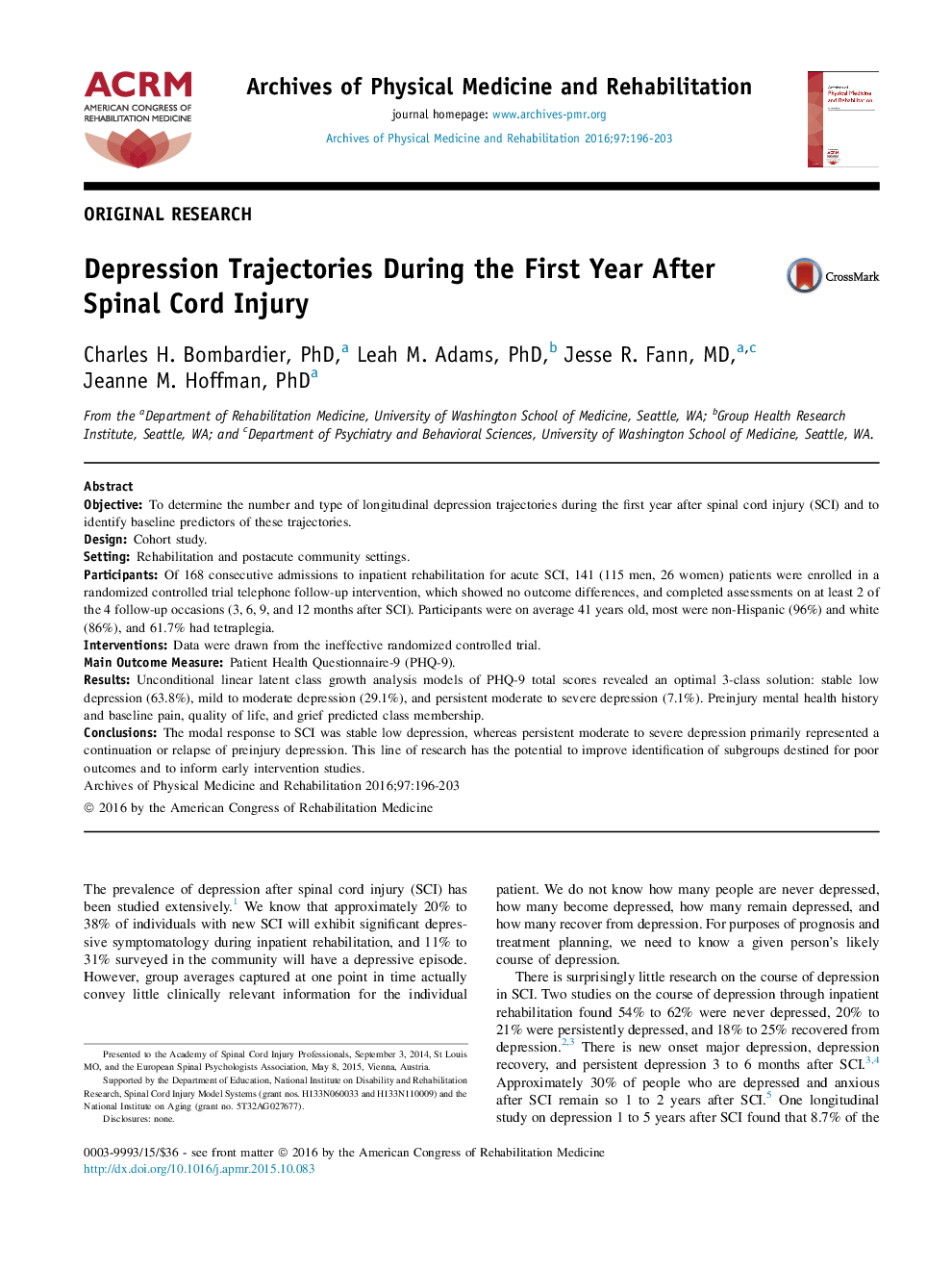| کد مقاله | کد نشریه | سال انتشار | مقاله انگلیسی | نسخه تمام متن |
|---|---|---|---|---|
| 3447919 | 1595671 | 2016 | 8 صفحه PDF | دانلود رایگان |
ObjectiveTo determine the number and type of longitudinal depression trajectories during the first year after spinal cord injury (SCI) and to identify baseline predictors of these trajectories.DesignCohort study.SettingRehabilitation and postacute community settings.ParticipantsOf 168 consecutive admissions to inpatient rehabilitation for acute SCI, 141 (115 men, 26 women) patients were enrolled in a randomized controlled trial telephone follow-up intervention, which showed no outcome differences, and completed assessments on at least 2 of the 4 follow-up occasions (3, 6, 9, and 12 months after SCI). Participants were on average 41 years old, most were non-Hispanic (96%) and white (86%), and 61.7% had tetraplegia.InterventionsData were drawn from the ineffective randomized controlled trial.Main Outcome MeasurePatient Health Questionnaire-9 (PHQ-9).ResultsUnconditional linear latent class growth analysis models of PHQ-9 total scores revealed an optimal 3-class solution: stable low depression (63.8%), mild to moderate depression (29.1%), and persistent moderate to severe depression (7.1%). Preinjury mental health history and baseline pain, quality of life, and grief predicted class membership.ConclusionsThe modal response to SCI was stable low depression, whereas persistent moderate to severe depression primarily represented a continuation or relapse of preinjury depression. This line of research has the potential to improve identification of subgroups destined for poor outcomes and to inform early intervention studies.
Journal: Archives of Physical Medicine and Rehabilitation - Volume 97, Issue 2, February 2016, Pages 196–203
